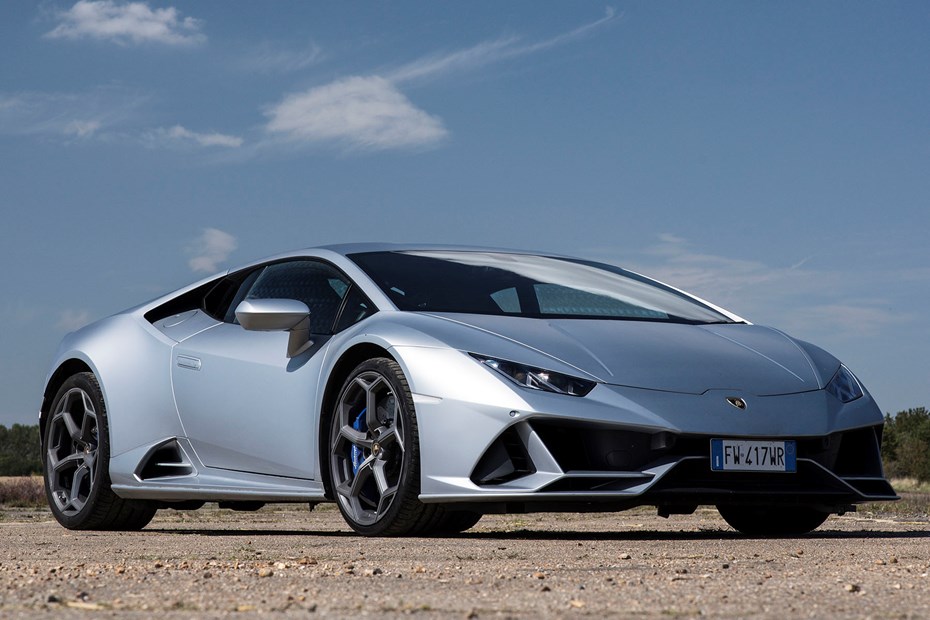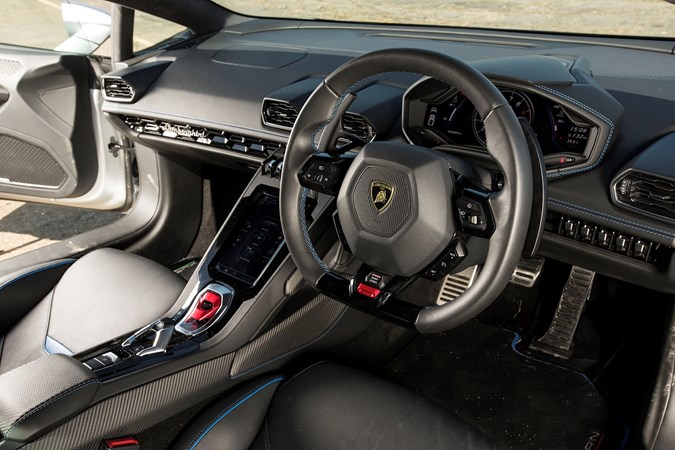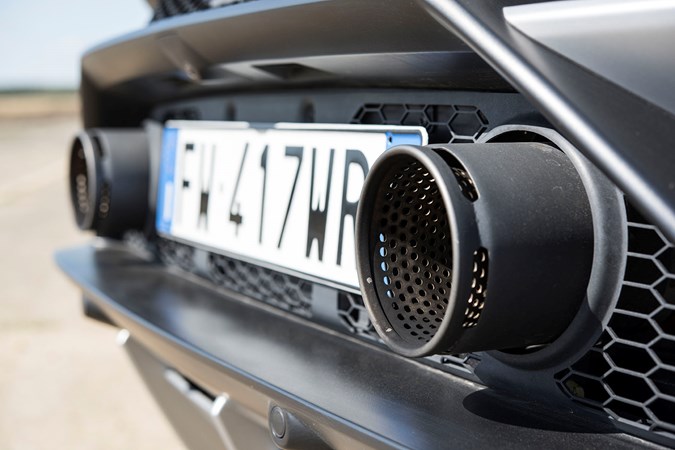
Lamborghini Huracan review

At a glance
| Price new | £168,233 - £370,712 |
|---|---|
| Used prices | £109,476 - £304,087 |
| Road tax cost | £600 |
Get an insurance quote with

|
|
| Fuel economy | 19 - 20.6 mpg |
| Miles per pound | 2.8 - 3.0 |
| View full specs for a specific version | |
Available fuel types
Petrol
Pros & cons
- Look at it! A true supercar
- Straight line performance
- Epic soundtrack
- Impressive road manners
- Raised price puts it against new rivals
- Driving position won't suit all
- Seats lack long-distance comfort
- Boot lacks room for touring
Lamborghini Huracan Evo Coupe rivals
Overview
Lamborghini’s highly successful V10 supercar has been facelifted and comprehensively updated for 2019. It’s been renamed, too: the overhauled version is called the Lamborghini Huracan EVO.
That means there are currently two Huracan models on sale: the Huracan EVO, and the more extreme Huracan Performante. A convertible version of the EVO is expected to follow, and a rear-wheel-drive version may too – but for now it’s available only as an all-wheel-drive coupe.
The price has been raised, to around £206,000 on the road in the UK at launch, making it more expensive than the likes of the McLaren 570S and the Audi R8 (with which it shares several key components), and a natural rival to the Ferrari 488 – itself expected to be updated soon.
What’s new for the EVO?
Lamborghini Huracan EVO highlights:
- Exterior styling and aerodynamic alterations, including new bumpers, intakes, a split-level rear spoiler and diffuser
- Relocated exhaust outlets and new sills. Apart from freshening the car’s look, they’ve contributed to greatly increased downforce at speed.
- A new touchscreen in the centre console, with internet radio and shortcut swipe commands
Engine upgrades similar to those of the top Performante model, increasing power from the previous standard Huracan’s 610hp to 640hp. The Huracan’s fantastic-sounding 5.2-litre V10 remains one of the few supercar engines to resist turbocharging, giving it more precise response and a higher-pitched, spine-tingling note from its redesigned exhaust.
All-wheel steering. The Huracan’s big brother, the V12 Aventador, has featured all-wheel steer for some time, but this is the first time the system’s been applied to the Huracan. At low speeds the rear wheels steer slightly in the opposite direction to the fronts to help the car turn more tightly, and at higher speeds they turn in a parallel direction, to help keep the car stable.
The Huracan features a new electronic ‘brain’, a central computer called LDVI (Lamborghini Dinamica Veicolo Integrata), which governs all of its many electronic systems: active suspension, the aforementioned rear-steer, the amount of torque sent to each wheel, and variable-rate power steering. There are a lot of electronics going on in this car.
Constantly monitoring the driver’s inputs, Lamborghini claims it can work out what the driver’s next move will be and prime the car accordingly, making it more agile and intuitive to drive quickly.
What’s it like inside?

The new touchscreen replaces the previous car’s buttons and dials on the centre console, and it controls the air conditioning, seat heating, Apple CarPlay (Android Auto is coming soon) and web radio stations from countries around the world.
Voice control is incorporated, and to help cut distraction while driving, Lamborghini has engineered a fingertip swiping shortcut system, which becomes active when the car is in motion.
To alter the volume for example, you trace two fingers up and down the screen, or tap three fingers anywhere on the screen to mute it. The navigation system zooms in and out automatically when approaching junctions, again to avoid driver distraction.
Testing it on the track
Our first test in the new Huracan EVO was on Bahrain’s Sakhir Grand Prix circuit, and it was very impressive. The previous standard Huracan was a well-rounded car that was incredibly easy to drive for such a powerful car, with lots of traction and commendably safe handling. However, some keen drivers felt it could feel slightly inert when driven quickly.
The EVO feels far more rounded, with greater front-end grip, and less tendency to understeer (where the front tyres begin to push wide slightly when cornering quickly). That’s helped by the new torque vectoring system, which can divide the engine’s grunt and send it to whichever wheel needs it the most to keep the car on the tightest possible line.
Its improved aerodynamics are tangible too, with great stability in the Bahrain circuit’s fast, sweeping corners. It can get a little twitchy under heavy braking, but that’s a tendency of many mid-engined cars.
Impressive aerodynamics
It’s to the engineer and designers’ credit that they’ve been able to achieve the improved downforce without fitting the Huracan with giant wings, like its top Performante variant, and its shape remains a relatively clean, uncluttered design.
Response from the turbo-free engine is very precise, and it still sounds wonderful. It feels as absurdly fast as you’d expect a 640hp car to.
The rear-wheel steer system works well. We tried a previous standard Huracan back to back with the EVO on a variety of slalom and steering circle tests and the EVO can turn tighter and carry greater speed. It will be interesting to see how natural the system feels on the road, however.





.jpg)

